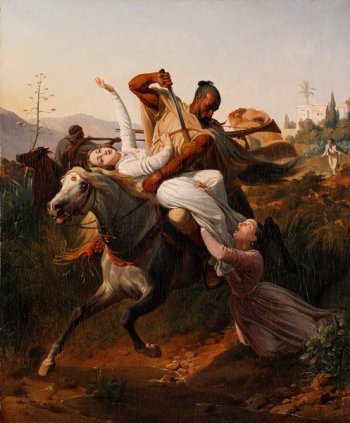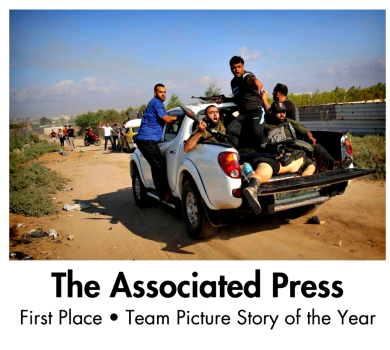Yes, it does explain it. I only stopped the intersectionality of victimhood along race. One can expand that to gender and religion and the narrative is perfectly revealed.
"Cultural Marxism" paradigm about "White oppressors" is historically inaccurate and doesn’t explain why the genocide of Christians in the USSR is overlooked.
For a thousand years, Muslims posed a threat to the Christian world, and particularly to Europeans, not the other way around.
For a thousand years, Europeans, including Slavs, were victims of violence:
In Islam, political and religious authority are inseparable, which is why it is of great importance to Muslims who holds power in a country and who governs them.
Islam became a global empire almost from its inception. In the 7th century, when Islam emerged, the Mediterranean world, aside from Jewish minorities, was entirely Christian. After a series of lightning-fast and crushing victories by Islamic forces, the eastern and southern coasts of the Mediterranean were permanently torn away from the Christian world, and even significant parts of the European continent fell under Muslim rule for many centuries.
635 — Byzantine Damascus
637 — Byzantine Jerusalem
642 — The beginning of the Islamization of Egypt
647 — The beginning of the Islamization of Libya
In the early centuries of Islam’s existence, Muslims managed to conduct military campaigns and spread their religion to new lands. In the process of this expansion, a question arose: what to do with non-Muslims who permanently lived in Dar al-Islam (the House of Islam) and those who came temporarily?
Non-Muslims who were allowed to live permanently under Muslim rule were called dhimmis, meaning members of a community granted a contract (in Arabic, dhimma) by Muslim authorities. Under the terms of this dhimma, non-Muslim subjects were required to acknowledge the supremacy of Islam and the authority of Muslims, paying a per capita tax (jizya) as a sign of submission, while their rights were also restricted.
A foreign visitor or temporary resident was called a musta’min, a holder of an aman, or safe-conduct pass. A musta’min was exempt from the jizya tax and many of the restrictions imposed on dhimmis. The aman was typically issued for a limited period and could be renewed. A musta’min who overstayed their aman became a dhimmi.
In the 10th century, Christians recovered and launched a counteroffensive, which eventually forced Muslims—sometimes temporarily, sometimes permanently—to retreat from many of the Christian lands they had previously conquered and governed. In the 11th century, the Norman conquest returned Sicily to the Christian world, and shortly thereafter, the Crusaders established four Christian kingdoms in the Levant, between the Taurus Mountains and Sinai, on lands that had been dominated by Islam since the 7th century. Finally, and most significantly, starting in the 11th century, a turning point came in the long struggle to reclaim the Iberian Peninsula. After centuries of victories, the Reconquista culminated in 1492 with the fall of Granada—the last Muslim state in Western Europe.
Throughout most of their shared history, relations between Muslims and Christians were defined by offense and counteroffense, jihad and crusades, conquest and reconquest. The loss of Lebanon and North Africa proved irreversible for the Christian world, and the Crusaders’ attempt to reclaim the Holy Land ultimately failed. The Reconquista—the reclamation of the Iberian Peninsula from the Moors and of Rus from the Tatars—turned into a new large-scale Christian offensive in Africa and Asia, as the Spanish and Portuguese on one end of Europe, and the Russians on the other, surged into the native lands of their former overlords on the heels of their victories.
The last great Muslim invasion of Europe, undertaken by the Ottoman Turks, faltered after the second unsuccessful siege of Vienna in 1683. The defeat and subsequent retreat of the Turks marked the end of a thousand-year Muslim threat.
In Europe, Ottoman Turks:
Constantinople Massacre (1453): Up to 40,000, pregnant women’s bellies slashed open.
Batak Massacre (1876): 5,000, women and children slaughtered.
Sack of Belgrade (1521): 10,000.
Kosovo Field (1389): Thousands executed.
Siege of Vienna outskirts (1683): 30,000, burned alive.
Slave trade:
Arab (7th–20th centuries): 10–18 million from Africa and Europe, men castrated, women sold to harems.
Ottoman (14th–19th centuries): Captured slaves from the Balkans, Hungary, and Rus, markets thrived in Istanbul and Cairo.
Pause the grim tallies. Touch the art.
"The Kidnapping" The painting portrays a dramatic moment of abduction: a warrior on horseback a Ottoman soldier captures a victim.
Author: Henri Félix Emmanuel Philippoteaux (1815–1884), a French battle painter known for his historical and military scenes.
 Now about Ukraine, where I’m from:
Now about Ukraine, where I’m from:
Tatar raids (16th–17th centuries): Crimean Tatars, vassals of the Turks, burned villages in Podolia, Volhynia, and Galicia, killed residents, and enslaved tens of thousands yearly. Over two centuries, up to 2 million were taken.
Slave trade: Ukrainians were sold in Ottoman markets (Istanbul, Cairo) as slaves, concubines, or janissaries.
City destruction: Kyiv, Chernihiv razed, e.g., in 1482 and 1577.
Boys and janissaries: Young Ukrainian boys (10–15) were taken, converted to Islam, trained in Ottoman schools as janissaries. They returned with Turks, brutally killing their own—burning villages, executing resistors.
Girls and harems: Girls (12–16) were sold to harems of sultans and the wealthy. They were raped, forced to convert, and resistors were killed.
Losses: Wars with Tatars and Turks weakened Ukraine, stunting its growth. Suffering ended only after Crimea joined Russia in 1783.
People all over the world killed each other without the "West:
About Africa: Africans vs. Africans
Rwanda Genocide (1994): 500,000–1,000,000.
Second Sudan Civil War (1983–2005): About 1,900,000.
First Congo War (1996–1997): 200,000–250,000.
Anyanya Genocide in Uganda (1972–1979): 100,000–500,000.
Burundi Massacre (1972): 150,000–300,000.
Muslims vs. Africans:
Fulani Jihad (1804–1830s): Tens of thousands.
East African slave trade (17th–19th centuries): Hundreds of thousands.
Darfur Massacre (2003–present): 200,000–400,000.
Bornu Expansion (16th–18th centuries): Tens of thousands.
Murder, cruelty, and slavery aren’t just the 'West': Muslims, Africans, and Indians were far from saints, despite how some portray them today, while the West brought order and progress, whereas others often brought only brutality. Therefore, the paradigm of 'White oppressors' is fundamentally wrong and historically unsupported. Your explanation through the lens of 'Cultural Marxism' doesn’t explain anything; on the contrary, it raises a new question about the false paradigm that labels Whites as 'oppressors.' Where did this deceitful 'Cultural Marxism' come from, which blatantly ignores historical facts, such as the thousand-year threat of Islam to the Christian world and Europe in particular, and for the same reason ignores the largest genocide of Christians in all of human history?




